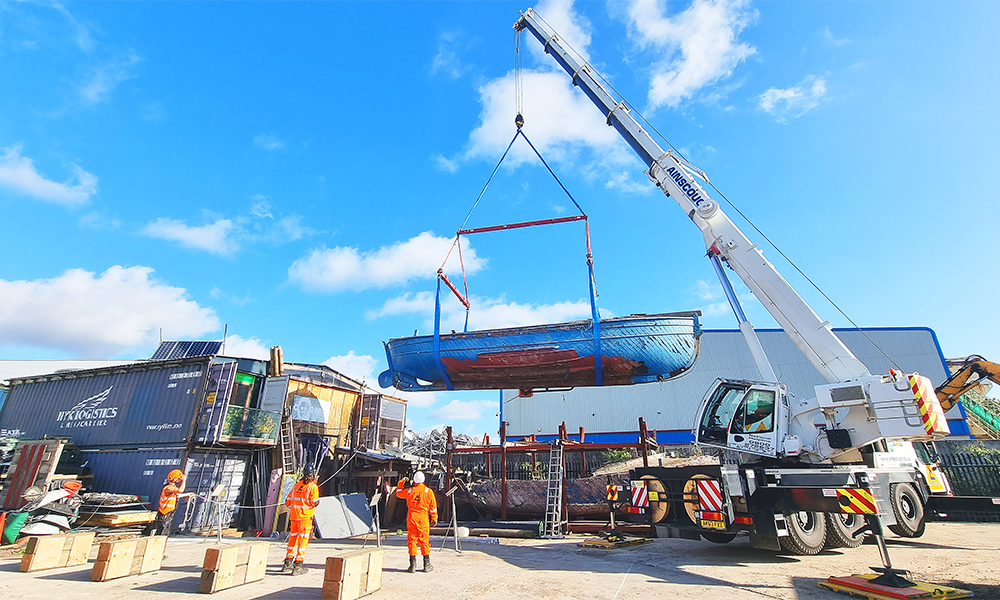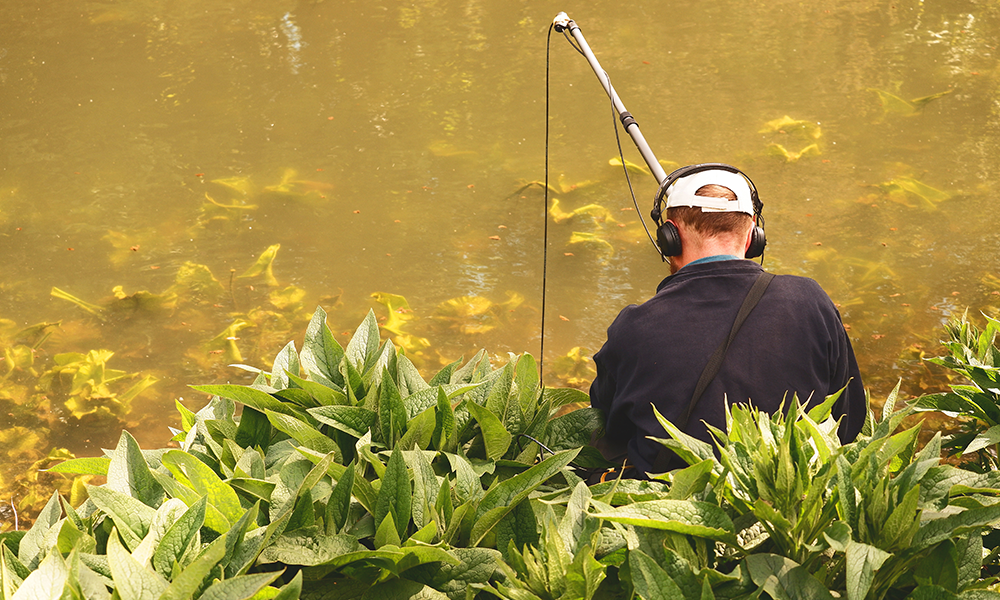Grant of £1.6million will see historic boat refurbished and used as the roof of a glass-walled structure

Subscribe to our free Wharf Whispers newsletter here
The Cody Dock project has many facets to it.
Central to its plans are the twin aims of returning what was an abandoned industrial wasteland to community use alongside efforts to boost and study the local ecology.
But there’s also Gasworks Dock Partnership’s mission to preserve and celebrate Newham’s rich heritage – a project that recently received a massive shot in the arm.
In 18 months’ time, walkers along the River Lea cutting through Cody Dock will find a singular structure in front of them.
Beside the rolling bridge and The Growing Space – now used to rear much of the project’s plant life – a new heritage centre will be created.
Lighting Up The Lea has won a £1.6million grant from the National Lottery Heritage Fund, which will see a glass walled pavilion built on the site covered by a rather unusual roof – a former Welsh lifeboat.
The vessel is not, however, just a convenient lozenge of timbers and iron to protect visitors from the elements.
It boasts a remarkable, historic link to Newham, making it perhaps the most appropriate of structures to help protect the history of the area.

arrival at Cody Dock
“Just before the Olympics in 2012, we were approached by a bunch of West Ham football fans who knew that the club was going to move to the London Stadium in Stratford,” said Simon Myers, Gasworks Dock Partnership and mastermind of the Cody Dock project.
“They knew the club originated at the Thames Ironworks, which once owned land at the mouth of the River Lea when its managing director, Arnold Hills, helped found a football club to help improve the health of its workers.
“The fans had bought a boat that had been built by the company, thinking that the London Legacy Development Corporation would agree to use it as part of a museum next to the new stadium dedicated to the history of West Ham and the Ironworks.
“However, they weren’t successful in securing funding or a site – even though it was a good idea – and they approached us initially just to store the boat.
“Years passed and nothing really happened except a second boat turned up that in an even worse state than the first.
“Eventually they offered them to us for scrap.”

scrap, or something else?
However, Simon and the team were not about to simply discard the craft. Instead, a plan was slowly hatched to show off at least one of the craft in all its glory and preserve it for future generations.
“My thought was that, if we’re going to do something with these boats, it’s because we want to tell their story,” said Simon.
“It’s not about getting them in the water – we’ve got plenty of boats here for that. So why not restore one, turn it upside down and use it as a roof of a structure with glass walls?
“That way people will get to see the exterior of the boat from outside and the interior when inside.
“You’ll have this beautiful cathedral ceiling and see all of the internal structure.”
The Frederick Kitchen, named in honour of a former lifeboat master, is not just an elegant architectural solution.
Having won funding to carry out a feasibility study – a precursor to the £1.6million award – the Gasworks Dock Partnership engaged in an extensive programme of research into her history.
It turns out, she may have been the very last vessel to leave the Ironworks, which closed in 1912.

an important history
“There’s a glass plate image owned by the National Maritime Museum in Greenwich that shows her sitting in a dry dock all by herself in 1913,” said Simon.
“We think she may have been the last to leave – we do know she was one of a string of five boats that weren’t finished when the works closed, although she was completed and became a Watson class lifeboat stationed at Beaumaris from 1914 to 1945.
“The closure marked the end of major shipbuilding on the Thames.
“Her hull is made from Honduran mahogany with a steam-bent interior frame of oak with a keel of solid iron that runs along her entire length and weighs as much as the rest of her put together.
“She’s really the pinnacle of timber shipbuilding – designed at the crossover between pulling and sailing vessels and motorised craft, so she has some adaptations including an encased propeller to avoid it being fouled by nets and rigging, which wouldn’t want if you were engaged in a rescue.
“A few years after she was launched, new technologies came in with the use of plywood and then fibreglass and plastic.
“She was the last of her kind.”

a grant for Cody Dock
The full grant will be used over three years, with 18 months to prepare the ground for the new structure and restore Frederick Kitchen to her former glory – the latter project being headed up by Simon’s son, Tom.
The money will also cover a rolling programme of events centred around Newham heritage with the space eventually used to host quarterly exhibitions.
“For a long time now, in addition to the ecology, which is really special, we’ve felt that one of the selling points of this area is the heritage of the Lea,” said Simon.
“One of the things that’s always struck us is that, apart from the House Mill, Newham doesn’t have any museums – certainly not ones that reflect the wider heritage of the area.
“There’s such a rich seam of history here, whether it’s the Lea as a boundary between the Danes and the Saxons or how the land on the east bank was part of Essex rather than London and all the implications of that.
“Then there’s the arrival of industry, which saw the local population increase from 4,000 to around 250,000 in about 50 years.”

a rich seam of exhibitions
“Frankly we would need an Amazon-size warehouse to cover all the heritage we have and we reckon we could go for 30 years without repeating a topic with quarterly exhibitions in our multi-functional, multi-purpose structure,” added Simon.
“The likes of West Ham and Tate & Lyle have fantastic archives that are not on show to the public so it would be amazing to feature pieces from those collections.
“We have so many plans. It will take 18 months to restore the boat and we’ll be re-landscaping the site of the building at the same time.
“We’ll be doing outdoor exhibitions for Lighting Up The Lea during that period as well as working with the community and participants on our education programmes to gather more stories and local history.
“When our heritage programme launches, our plan is that one quarter will be dedicated to ecology, one to social heritage, one to industrial heritage and the last to miscellaneous aspects of history.”

key details – Cody Dock
The Cody Dock project has a wealth of opportunities for volunteers to get involved, with activities including the restoration of the Frederick Kitchen, cleaning up the River Lea and studying the area’s ecology.
Find out more about the project here
Read more: How Third Space has expanded its offering at Canary Wharf
Read Wharf Life’s e-edition here
Subscribe to our free Wharf Whispers newsletter here
- Jon Massey is co-founder and editorial director of Wharf Life and writes about a wide range of subjects in Canary Wharf, Docklands and east London - contact via jon.massey@wharf-life.com








